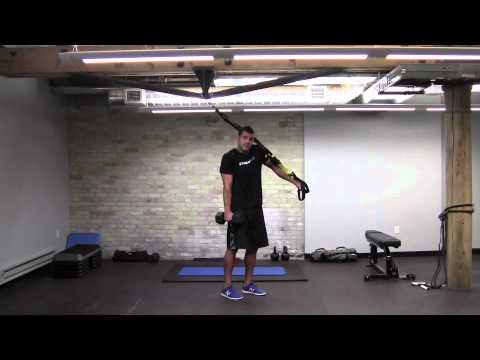Trainees want workouts to be challenging, and with the TRX, it's easy to provide that challenge. Anyone can push trainees to go harder, faster and for longer. But “good” training should do much more than just provide an intense conditioning challenge. It should help trainees to build sound movement patterns before moving on to strength, power and metabolic components. So what's the best way to approach programming and teaching TRX training? This is one of the fundamental questions we at TRX honed in on while developing the TRX®TEAM™ group training concept. We considered every angle of what goes into developing effective TRX instructors capable of providing a fun, effective, time efficient challenge to trainees that's rooted in developing proper movement patterns.
Ultimately, we came up with FLAC, an acronym that encompasses what we've discovered to be the best practices for instructing all TRX trainees, whether they're young, elderly, beginners, experts, elite athletes, tactical operators or anywhere in between on the fitness spectrum. FLAC stands for: Focus, Learn, Apply, Challenge. In a nutshell, FLAC means teach a skill first before adding strength, tempo, power or stability challenges. Whether you're a TRX®TEAM™ trainer, a personal trainer working with individual clients or you train solo on the TRX, we recommend using the FLAC method to make the most of your training time. Here's a closer look at the concepts behind these four simple words and how you can use FLAC to help yourself and others train on the TRX.
F=FOCUS
At the beginning of the workout, the focus should be on learning movements in an appropriately unloaded position that allows the trainee to learn at an intensity level well below fatigue threshold. Trainees should be taught to move consciously in order to learn the movement patterns they need to successfully tackle the same movements at a higher metabolic intensity or with a greater stability or resistance challenge.
Instructors should use simple, comprehensible cues that help trainees to master the basic movement patterns they will use later, at a higher intensity. First the instructor describes and demonstrates the appropriate start, midpoint and end position for the movement. Then the trainees experience these points as isometric holds with the help of cueing from the instructor. Early on in the workout/program, the focus is on movement—what joints should be stable, which should be mobile, what muscles should be working, how the core and whole body should be engaged and involved in the movement.
L=LEARN
“Learn” means enabling trainees to learn an effective progression. During this phase, trainees apply what they learned in the “focus” phase and set it in motion at a low tempo. This allows trainees to find the appropriate stability, vector and pendulum challenges for the movements they will use during the “apply” phase of the workout. If a trainee is unable to do a TRX Single Leg Squat with appropriate form, this is the time to demonstrate how to regress the movement so that it's something the trainee can successfully execute with good form. This is also the time to help the trainee dial in the appropriate level of resistance with movement away from or toward the anchor point. All the while, the instructor watches and cues to ensure trainees use appropriate movement patterns.
A=APPLY
During this third phase, trainees apply what they've learned during the first two phases to the workout. Trainees now know what the movements should feel like, what joints should be moving, what parts of the body should be stable and what muscles should be firing or contracting, and they can put this knowledge into motion.
C=CHALLENGE
During the final phase, the instructor increases the tempo, adds explosive movement to the foundational movements the trainees learned or increases the resistance or stability demands of the movements. This is the appropriate portion of the workout for turning up the heat and hitting trainees with a metabolic challenge.
The ultimate goal of the FLAC approach is to teach trainees proper fundamental movement patterns or skills (i.e. pushing, pulling, squatting, lunging) while also providing a conditioning challenge. We've found this to be the optimal approach for instructing trainees on the TRX.
Learn more about TRX®TEAM™ and the R4 solution.
As the resident TRX Professor, Chris Frankel draws from over 25 years of experience as a strength and conditioning coach. He earned an MS in Exercise Physiology from the University of New Mexico, where he is currently completing his doctorate in Exercise Science. Before taking the position of Director of Programming at TRX, Chris was an instructor in the Department of Health, Exercise and Sport Sciences at the University of New Mexico.


